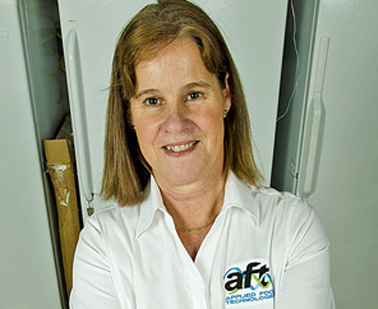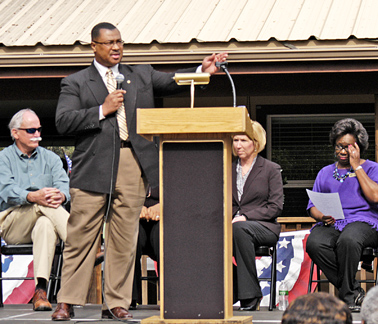Maddox Foundry and Machine Works since 1905
 Locally owned Maddox Foundry and Machine Works, Inc. has produced metal foundry and machine works products since 1905. By the mid-20th Century, the company had expanded operations, selling internationally as well.
Locally owned Maddox Foundry and Machine Works, Inc. has produced metal foundry and machine works products since 1905. By the mid-20th Century, the company had expanded operations, selling internationally as well.
ARCHER – It survived its early years as a start up company, it survived the Great Depression, it survived World War II and it's surviving the current economic downturn.
Archer’s Maddox Foundry and Machine Works, Inc. is a local, family-owned business that has produced metal foundry and machine works products since July 1905.
This summer will mark 108 years since it first began operations.
Current owners, Monte Marchant, Valerie Hipp and Marchant's daughter Mary Hope, have worked for years to maintain the company's vision true to the original owner, William 'Hitup' Maddox, Hope said.
Maddox, Marchant and Hipp's grandfather, wanted to create a one-stop shop, where a product would be designed and built under the same roof.
Even though he died in the early 1950s, his family members continue his tradition.
The history behind the foundry and the family is filled with sacrifice, passion and growth, Hope said.
"If we don't know where we've been, we don't know where we're going," she said.
Hope said her great grandfather Maddox first came to Florida from Georgia looking for a job. And 13 years later, after working for 90 cents a day at a phosphate mine company owned by C.W. Chase, he decided to open a foundry where he could supply the products needed by the two railroads that crossed through Archer at the time.
Hope said that without the help of Chase, who gave Maddox about $600, the foundry would not exist today.
The company has been passed down in the family from generation to generation.
"It's like a gift for us," Hope said. "We didn't have to sacrifice the way he did."
The family not only owns the company but also works in it. Hope's son, Chase Hope, is vice president, but she said he never sits down in his office because he is always working on a project.
"[He] makes sure the foundry gets the products out," she said.
The family is very dedicated to the company, Mary Hope said.
Her cousin, Bill Hipp, is the vice president and marketing sales representative at Maddox Foundry & Machine Works, Inc. Hipp's son, Paul Hipp, also works at the foundry.
"They can't wait to get to work, they can't wait to get in the dirt," Mary Hope said of Chase and Paul. "It's in their blood."
Mary Hope said she is committed to the foundry because of the history the building embodies, but mainly because she said her son was born with knowledge of the company. She said she is amazed about how much he knows at the age of 29.
Chase Hope works in every department of the company. Mary Hope said he doesn't ask other workers to do anything he can't.
She said that most of the employees are cross-trained. Because they are able to do more than one job, the company has been able to remain stable during this economy.
"It's the employees in the back that make this company run," she said. "It's important to make them feel needed."
Some workers also have had generations of their family work at the foundry, Mary Hope said.
Sam Brown Jr.'s father used to work at the foundry before he died. Brown is currently the person who oversees the operations in molding and melting.
The company has also grown since Maddox died, Bill Hipp said. It not only supplies products locally or out of state but out of the country as well.
He said that international shipping began around the late 1940s or early 1950s. They have sold products to companies in Puerto Rico, Philippines, Mexico and Venezuela since then.
Maddox Foundry has been able to stay in business also because the family has stayed together, Mary Hope said.
"If we didn't get along we knew the company would not survive," Mary Hope said.
# # #
E-mail acarroz@
alachuatoday.com
Add a comment




